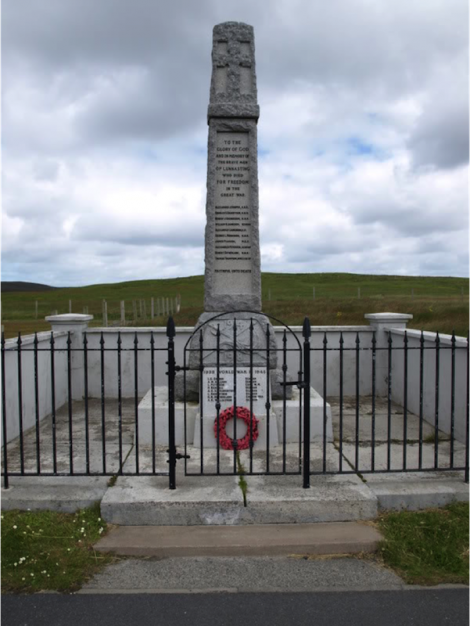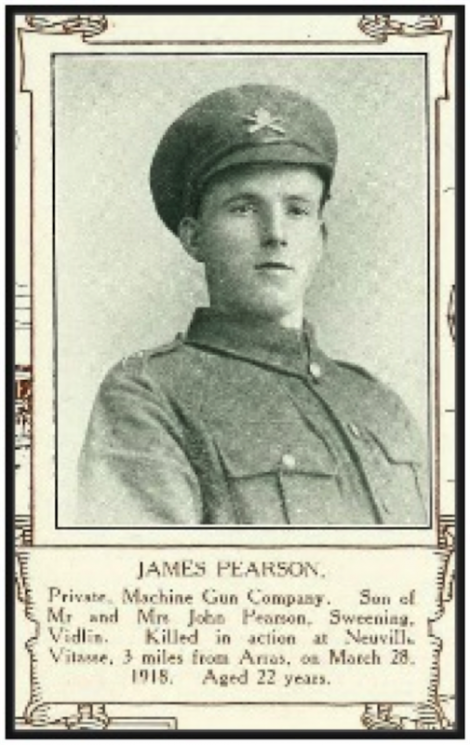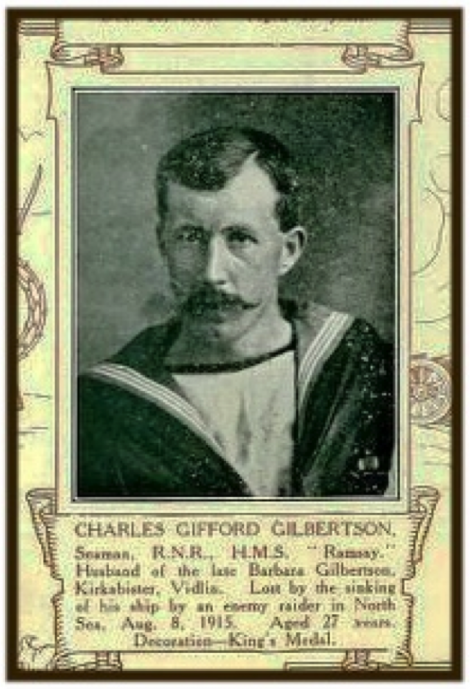Features / World War I: commemorating a shared history
THE lives of ten young men from Vidlin who gave the ultimate sacrifice during the Great War have been brought back into the community’s conscience thanks to the work of a local hobby historian.
Over the last eight months Paul Bendix, from Lunna, painstakingly researched the fate of those named on the parish’s war memorial.
His efforts coincide with those in many other communities in Shetland and across the UK, as the country prepares to commemorate the centenary of the First World War.
The 55 year old former MOD employee unearthed some extraordinary stories of bravery and endurance, but also found that five of those named died of diseases associated with too many people living in crammed locations where sanitation and hygiene were often rudimentary.
Of the five who died in combat, two lost their lives in the trenches on the Western Front, while three were lost at sea.
Bendix said he was “surprised” by the variety of stories he found which were very different from the experience of other communities that often suffered fatal blows when so-called “pals battalions” were wiped out in one or two major events.
Not so in Lunnasting: serving in the Gordon Highlanders, 22-year old Private Alexander Laurenson, from Lunning, was involved in one of the most successful advances in trench war history on 9 April 1917 but was – most likely – killed in one of the final assaults.
Meanwhile, machine gunner James Pearson, from Sweening, died on 28 March 1918 during an offensive against German positions near the French city of Arras.
In a letter sent to Pearson’s father commanding officer Lieutenant Blower praised the soldier’s unselfishness and courage.
Lt Blower wrote: “He (James) had been with me so long, and I had grown so fond of him, that it is almost like losing a brother.”
Become a member of Shetland News
Sailor Alexander Peterson, 34, of South Lee, was on board the SS Hildawell, a freight ship on route from Bilbao to Middlesburgh with a cargo of iron ore, when the vessel struck a mine on 20 December 1916 and sunk with the loss of 23 lives.
William Hunter Jamieson, 29, of Levenneep, died on 16 July 1917 when the cargo boat SS Ribston was hit by a German torpedo around 85 miles west of the Fastnet Rock.
Meanwhile, seaman Charles Gilbertson served on board the HMS Ramsey, one of the many armed boarding vessels employed to enforce the naval blockade across the North Sea from Shetland to Norway.
On 8 August 1915 HMS Ramsey chased a suspicious ship in the northern North Sea which, when overtaken, was flying the Russian flag.
As HMS Ramsey lowered a boat in preparation to board her, the Russian flag came down and the German Ensign was raised in its place. Taken by surprise the Meteor opened fire and hit HMS Ramsey with a torpedo in the crew’s quarters.
She sunk within minutes with the loss of 53 lives including seaman Gilbertson. Forty three men were picked from the water and taken prisoner.
However, the Meteor didn’t make it to safety as the Admiralty launched a major chase across the North Sea involving as many as 12 light cruisers, eventually cutting the Meteor off from its base in Wilhelmshaven.
Anticipating their fate, the Germans scuttled their ship and escaped together with their prisoners to a Swedish trawler nearby, from where the British sailors returned to their own country’s ships.
Bendix said the impact of the war on Vidlin – and, for that matter, any other community in Shetland – must have been profound as no other conflict claimed so many lives from the village.
“It makes you realise that this is a small intimate community of a number of families. They share a history, they share an experience.
“There are people on the war memorial who are relatives of people living in Vidlin today – that’s unusual outside Shetland.”
Local schools, history groups and community museums are already working on similar projects and exhibitions to learn how the Great War affected their own communities.
In addition, Shetland Museum and Archives is to highlight how Shetland’s location at the entrance to the North Sea played an important role in enforcing a blockade of the North Sea in an attempt to wreck the enemies’ economies.
Between 4,000 and 5,000 Navy personnel were deployed on converted ocean liners – including the famous Oceanic which sunk off Foula – to intercept neutral ships and confiscate any cargo destined for Germany.
Guarded by two large guns stationed on the island of Vementry, the 10th Cruiser Squadron had it base in the large area of enclosed sea that is Busta Voe, Olnafirth and Aith Voe.
An exhibition in the museum from 23 August until 5 October called Blockade 1914 to 1918 will look at the work of these crews and their impact on Shetland.
Curator Dr Ian Tait said a programme of community-based events from 2014 to 2018 was being drawn up.
One idea he and learning assistant Yvonne Reynolds are working on is to organise a conference in 2016 to enable local schools and community groups to present the results of their research.
- Paul Bendix would like to thank the Lunnasting History Group and the Cabin Museum for all their assistance. He presented his findings in an illustrated talk in the Vidlin Hall on 17 June. His paper can be read here.
- Anyone who wants to find out more about what is planned to commemorate the centenary of the Great War should contact Shetland Museum and Archives at info@shetlandmuseumandarchives.org.uk
Become a member of Shetland News
Shetland News is asking its readers to consider paying for membership to get additional perks:
- Removal of third-party ads;
- Bookmark posts to read later;
- Exclusive curated weekly newsletter;
- Hide membership messages;
- Comments open for discussion.
If you appreciate what we do and feel strongly about impartial local journalism, then please become a member of Shetland News by either making a single payment, or setting up a monthly, quarterly or yearly subscription.






























































